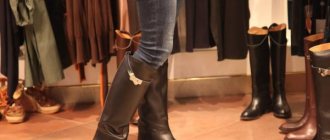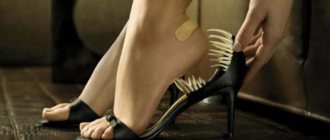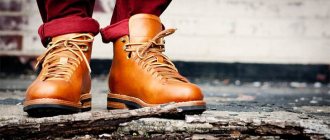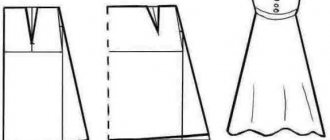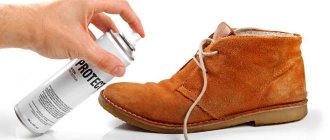How to reassemble a car seat after washing? This is worth thinking about before you start cleaning or washing the seat cover, which ensures the safety of the baby who is in the car while driving. The special design allows the cover to be washed multiple times without damaging it. The visual appeal and integrity of the material can be preserved by proper washing using appropriate detergents. Assembling the car seat in compliance with all the recommendations given in the instructions makes it possible to avoid damage to the fabric and breakage of individual structural elements.
Content
1 Installing the car seat 2 List of parts 3 Care and maintenance 4 Removing the cover 5 Important 6 Using the shoulder belts 7 Correct positioning of the belts 8 Changing the height of the shoulder belts 9 Installing a child car seat (9-18kg) 10 Adjusting the belts 10.1 Attaching the belt 10.2 Tightening the belt 10.3 Loosening the belt 10.4 Removing the shoulder belts 10.5 Removing the seat belts 11 Adjusting the headrest 12 Installing a child car seat (15-36kg)
Mounting a booster on the back seat of a car
Every car has several potential safety zones where it is recommended to install child car seats. They were discovered during crash tests and are reflected in child accident statistics.
Among them is the rear seat behind the driver's seat. In this case, the likelihood of injury is minimized, especially in frontal collisions. The driver turns the steering wheel in such a way as to prevent an impact from his side.
Positioning the seat behind the driver's seat reduces the likelihood of injury.
It is also possible to place a booster in the central part of the rear seat. In this case, regardless of the direction the steering wheel is turned in an accident, the impact falls on the rear, which does not affect the small passenger in any way.
It is prohibited to transport children with the booster seat placed in front. When the airbags are turned off, the risk of injury becomes maximum, and even simple movement on a flat asphalt surface will cause great discomfort to the passenger.
Important
Do not leave children unattended in a car seat. Any luggage or other items that could cause injury in a collision must be properly secured. This child restraint cannot be used without a cover. The seat cover should not be replaced with one not recommended by the manufacturer because it is an integral part of the child car seat.
The child restraint system should be replaced if it has been subjected to stress as a result of an accident, as damage may not be visible to the eye.
It is dangerous to make any changes or additions to a child restraint without the approval of a competent person. When the child restraint is inside the vehicle, please always secure it.
When installing a car seat, it is very important to carefully follow the instructions provided by the child restraint manufacturer. All straps holding the child car seat in the vehicle must be strong. Use only those contact points and connections that are described in the instructions and marked on the child restraint.
- This seat is a "universal" child restraint. It meets the strict ECE 44/04 safety standards for general use in vehicles and is suitable for most (but not all) car seats.
- Can only be used with 3-point seat belts.
- Correct installation is possible if the vehicle manufacturer has indicated in its instructions that a “universal” child restraint for a given age group can be installed in the vehicle.
- This child car seat is classified as a "universal" seat based on more stringent criteria than those used to evaluate earlier designs that were not covered by this notice.
- If in doubt, consult the child car seat manufacturer or retailer.
Need for cleaning
A thrifty owner is unlikely to have doubts about whether there is an urgent need to regularly maintain cleanliness in the car. This must be done without fail. Therefore, those owners who try to be neat in everything regularly wash their car seats. You should not refuse to carry out this hygienic procedure, otherwise very soon the car will literally drown in the mud. And this can subsequently lead to a number of unpleasant situations:
- The appearance of a persistent unpleasant odor in the car.
- Stains from food and drinks on carpets and seats. They will appear especially often among those owners who travel with children.
- The appearance of persistent odor or contamination in the case of transportation of specific goods.
- The appearance of dust in the cabin, capable of filling all the cracks in it. As you move, due to the influence of the air flow from the air conditioner or from an open window, all the dust will be spread throughout the cabin, which can ultimately cause allergies.
All of these problems clearly demonstrate why it is so important to clean your car interior regularly. This procedure will make car trips more enjoyable and allow not only the driver, but also his passengers to breathe clean air.
You should not neglect cleaning the chair, as well as the floor and ceiling, especially since there is nothing complicated about it. In any store you can purchase special products that can significantly facilitate this simple procedure.
Changing the height of the shoulder seat belts
1. First, loosen the straps.
2. Locate the seat belt connector at the rear of the car seat.
3. Release the straps from the connector.
4. At the front of the car seat, thread the seat belts through the slots in the seat back and the shoulder pads.
5. Slide the shoulder pads back through the slot.
6. Insert the shoulder pads into the slots in the back of the car seat and cover appropriate for the child's size.
7. Pull out the shoulder pads from the front.
8. Make sure the rubberized side of the shoulder pads is on the baby's chest. Pass the seat belts through the pads. Check that they are not twisted.
9. Reinsert the seat belts into the connector on the back of the car seat.
Repeat with each seat belt.
Make sure the straps are threaded at the same level.
It is recommended that the child, while in the car, be fastened in a child car seat with seat belts for as long as possible.
The need to wash the product
Cleaning a child's car seat should be carried out on a regular basis, because a dirty object in the car interior not only looks sloppy, but also accumulates a huge number of pathogens. The fact that the car seat is intended for a child says a lot: there will be crumbs, stains from spilled drinks, and sand from the baby’s clothes. All this together forms an excellent environment for the proliferation of bacteria, which can serve as carriers of dangerous diseases. This is why regular cleaning of car seats is necessary.
Installing a child car seat with a three-point car seat belt (9-18kg)
Place the child restraint on the car seat.
1 . Place the diagonal vehicle seat belt under the headrest as shown in red and the lap belt between the base of the child restraint and the armrest as shown in red. Pull the car seat belt as hard as you can so that it does not sag and pass it through the seat belt guide in the back of the seat.
2. Pass the vehicle's seat belt around the back of the child car seat, over the seat belts, and back through the seat belt guide on the opposite side of the seat back.
3. Pull the seat belt through the guide and install the child car seat tightly against the back of the car seat.
4. Route the seat belts and diagonal straps between the armrest and seat base as marked in red.
5. Secure the vehicle seat belt into the seat belt buckle, making sure that the vehicle seat belt and the buckle are aligned. Please contact the child restraint manufacturer if you are in any doubt about this. Tighten the vehicle's seat belt until the seat is held firmly in place.
You can now buckle your child into the seat. Make sure the seat belt is not twisted. Also ensure that the cover does not in any way interfere with the movement or adjustment of the seat belt webbing. Make sure that the hard and plastic parts of the child restraint do not get stuck when the car seat moves or in the car doors.
To remove the child restraint, follow the above instructions in reverse order.
How to disassemble a car seat to make it easier to reassemble later?
You need to remove the cover from the child car seat carefully and slowly, without sudden movements. Before removal, you need to carefully look at how the key elements of the product are connected to each other. The seat belts must be removed from bottom to top. After this, you can start removing the covers.
The seat belts are disconnected first. To perform the process correctly, you need to press a special button at the junction of the belts. There is no need to pull them by force or tear them out of the cell without pressing a button - this can damage the structure. After removing the belts, you need to detach the upholstery and liner.
If you quickly and inattentively disassemble the chair, you may encounter the complexity of its subsequent assembly. Often parents forget in what order they disconnected all the elements, and there are no step-by-step instructions from the manufacturer. In this regard, it is recommended that when disassembling elements, record the order on a piece of paper. Just write down the name of the element, numbering the order.
If this is your first time disassembling the car seat, you can take pictures of the process to simplify further assembly. You can also record all the actions on a video camera.
Adjusting the straps
Belt Attachment
1. Connect the two metal sections of the buckle connectors.
2. Insert the two buckle connectors into the groove at the top of the buckle until they “click” into place.
Always check that the harness is properly secured by pulling upward on the shoulder straps.
To release the belt, press the red button on the buckle down.
Tightening the belt
- Pull the shoulder straps upward to remove any slack from the lower portions of the strap.
- Pull the shoulder pads of the belt as low as possible.
- Now pull the adjustment strap until the straps are fully tightened.
Seat belts should be adjusted as snugly as possible without causing discomfort to your child. Make sure the crotch portion of the seat belt is positioned as low as possible toward your hips and not around your stomach.
A loose belt can be dangerous.
Check the seat belt adjustment and tighten it every time you place your child in the seat.
Loosening the belt
- Loosen the belt by pressing the lever (under the seat cover) on the front of the seat.
- Grasp the two shoulder straps with one hand. Then press the lever under the upholstery while pulling on the shoulder straps to loosen the seat belt.
When adjusting the shoulder straps, be careful not to pinch the seat belt adjusting straps when pressing the lever down.
Caution - Check that the belts are not twisted.
Removing the shoulder belts
1. First, loosen the child seat's seat belt adjustment strap.
2. Locate the harness connector on the rear of the child seat.
3. Remove both straps from the connector slots on the back of the backrest.
From the front of the seat, thread the straps through the slots in the seatback and fabric cover.
Removing the seat belts and crotch strap
1. Locate the three seat belt buckles under the seat. Turn the narrow end of the buckles and thread them and the straps through the slots in the seat base and then through the slots in the fabric cover. The straps and crotch strap can then be completely removed from the seat.
Keep the infant insert, shoulder pads, crotch pad, buckles and harness in a safe place.
How to reduce shoe size at home
If we omit such nuances as the rise of the foot or the height of the heel, then the main criterion for the comfort of shoes is the correctly chosen size.
But it happens that you really liked a pair that was left in a single copy, which is also too big for you. And you buy it, hoping that it’s “big, not small,” and that it will wear normally.
But hopes are not justified, and walking in large shoes turns out to be incredibly uncomfortable. Is it possible to reduce the pair you like at home?
Shoes do not fit: when can they be returned to the store?
The easiest option is to return the unsuitable purchase immediately on the day of purchase. If you're lucky and the seller remembers you, you can exchange the shoes for a pair of the size you need or get your money back.
According to the Consumer Protection Law, you can return the shoes within two weeks after purchase.
But only on condition that the pair is clean, undamaged, and the factory packaging, labels and receipt are preserved.
However, do not be upset if the receipt has not been saved - in any case, information about the sale is in the store documentation, and the sellers have a second copy of this document.
You can return shoes to the store using the Consumer Protection Law
The store has the right to exchange shoes you don't like for a more suitable pair with the same or higher price (if you agree to pay extra). If a suitable pair is not available on the day of your request, then you can request a refund of the cost of your purchase, and the amount must be returned within 3 days after your request.
Without magic: you can only make shoes one size smaller
If the refund or exchange is unsuccessful, you will have to think about how to make the pair wearable and stretch it yourself. Note that this can be done using:
- various inserts and insoles,
- specialized chemicals and home recipes.
The first option is suitable for any shoes, but the second is optimal for products made from smooth genuine leather. Shoes made of textile, suede or artificial material may lose their presentation or may not respond to your tricks at all. In addition, this way the pair will decrease, at best, by 0.5–1 size . Therefore, sometimes it is wiser to turn to specialists.
In the workshop, shoes are narrowed using lasts of the required size.
Specialists make shoes smaller by means of complete or fragmentary reupholstery. In this case, the heel and sole are removed, and the upper part is placed on a last of the required size.
Then a suitable heel and sole are selected and the structure is reattached. After this procedure, the shoes will fit you perfectly, but, unfortunately, not all styles are subject to it. And such work will not be cheap.
You can return the size to worn-in shoes, but not from all materials.
How to reduce the length or fullness of new shoes at home
If you don’t want to part with your beloved couple, but there is no way to spend money on a workshop, the most proven folk methods will come to the rescue.
If the pair is wide or falls off the heels
A universal option for any shoes is the insertion of special inserts or additional insoles.
Inserts made of latex or silicone are attached to the heel or toes and are especially suitable if you are plump but too long. But they can only be used if the heel is no higher than 7 cm.
An old-fashioned method such as cotton wool or tissue paper compacted into shoes or boots is also suitable for this purpose. But this, of course, is not suitable for dress shoes with an open toe.
Photo gallery: insoles and inserts to reduce the length and fullness of shoes
With the help of silicone orthopedic insoles, you can quickly reduce the size. These inserts in new shoes will not only reduce the size, but will also protect you from new calluses on the heel. These orthopedic insoles can be inserted into sneakers or sneakers to reduce the size. This insert will reduce the length of the shoe by half a size.
If you want to prevent oversized shoes from falling off, apply double-sided tape to the insole. This option is only suitable for wearing on bare feet and cannot be used for a long time, since the adhesive on the tape causes discomfort. That is why it is most often used by models at fashion shows.
When gluing double-sided tape to the insole, keep in mind that it will be difficult to tear it off later
Changing the size of a leather or suede pair by manipulating water and temperatures
To do without inserts and reduce both the size and fullness of shoes made of genuine leather and suede, you can try more drastic methods. But be prepared for the fact that they can ruin the products.
- Temperature changes are a risky method, although effective.
Shoes are moistened with water and dried near heating devices. The size will definitely decrease, but the leather or suede may warp and crack. - To make leather shoes smaller and narrow their toe, a pair is briefly immersed (for 2–3 minutes) in a basin of hot water at a temperature of about 60°C, where a small amount of washing powder is dissolved, which softens the leather.
After this, without rinsing, the pair is dried in the sun or with a hairdryer. - Suede shoes are best made smaller by using insoles in a matching color. If you decide to take a risk, you can steam them and then put them in the freezer. This will allow you to make your shoes a size smaller due to the tendency of suede to shrink greatly after it gets wet.
To prevent shoes or boots from being severely damaged or warped, the dried shoes are sprayed with a special shoe softener, which can be bought at a shoe store. The main task of the active substance of this product is to make the skin more elastic and supple.
Then you need to walk around the house in pairs, and then it will finally take the shape of your feet and the desired size.
The opposite method - we use a stretching spray for shoes made of patent leather
Another way to break in shoes is to use a special stretcher and stuff them with paper, but not too tightly so that the size does not increase even more. After the product dries, the vapor should narrow slightly.
The stretcher can not only stretch, but also narrow shoes by half a size.
How to narrow the boot shaft yourself
There are various options for narrowing the shaft. Moreover, while suede boots can still be made smaller on your own, it is better to take leather ones to a workshop.
Video: how to sew a large boot boot yourself
To narrow the top of a suede pair, craftsmen use two main methods - inserting a lace and an elastic band, and this can be done without using a sewing machine.
Video: how to insert an elastic band into the top of a boot
Returning a comfortable size to shoes, favorite sneakers or sneakers that are too stretched
Actually, the essence is still the same. Insoles and liners will again come to the rescue, and the option of wetting it with warm water and then drying it on the foot is also suitable.
Moreover, the foot should be in a very thin sock or barefoot, so that the shoe does not stretch even more and takes the desired shape. In this case, the pair must be dried with a hairdryer in cold or warm air mode.
You can also soak your shoes in a soapy solution and then dry them in the sun or with a hairdryer.
Video: what to do if your toes slip forward in worn-out sandals
To make a sports pair more comfortable, simply wear a thick sock in winter, replace a worn-out insole, or insert a second one - bulky foam or felt. In such shoes, the use of special inserts is especially important, since an additional shock-absorbing effect is created. They are also inserted to avoid chafing and calluses.
Stretched sneakers or sneakers can be reduced using insoles
It is better not to use other reduction methods for worn items.
Video: how shoemakers reduce the volume of shoes
As you can see, there are many simple and effective ways to make your shoes smaller. The simplest is to use special insoles or silicone pads. You can use a less expensive option - just stuff paper or cotton wool tightly into the toe of your shoes. But it’s worth remembering that only a properly sized pair will keep your feet healthy and be comfortable to wear.
Source: https://sovet.help/sovety-dlya-doma/kak-umenshit-razmer-obuvi.html
Adjusting the headrest
Depending on the height of the child, the headrest can be adjusted higher or lower.
- Place one hand on your back. Press the button in the headrest and pull with your other hand.
- Move the headrest up or down so that your child's head is centered on the headrest.
Make sure it is locked into one of the six height positions by pulling on the head support.
The red seat belt guides should be at or just above the shoulders, as shown by the dotted line.
Classification
When choosing and installing seats, you need to start from the weight classification, which is considered generally accepted in Russia and Europe.
There are several groups:
- Zero or group 0. These are chairs for newborns whose weight is no more than 10 kilograms and whose age does not exceed 6 months. A prerequisite for them is to be placed sideways in the direction of traffic;
- Car seat group 0+. Here children are up to 13 kilograms and no older than one year. Mounted frontally against the movement of the car;
- First group. This includes car seats for children whose weight ranges from 9-18 kilograms and whose age ranges from 9 months to 4 years. Place your face in the direction of the car;
- Second group. Includes small passengers weighing from 15 to 25 kilograms and ages from 3 to 7 years. They are also placed facing the direction of travel;
- Third group. These are the oldest, weighing from 22 to 36 kg and age from 6 to 12 years. Install as in the case of the second group.
Based on this classification, you will know exactly which car seat to buy for your child in the weight range of 9-36 kg.
Don't worry if you don't have seat belts. You can, and sometimes need to, secure your child with the straps that come with the chair you purchased.
As for the chairs themselves, it is worth highlighting brands like Babyton, Zlatek, Rant, Infiniti or Mishutka. Focus on your taste and financial capabilities.
Safest place to install
Traffic police rules allow you to transport a child in a car seat anywhere. And here is the exact answer to the question “where is it safer?” does not exist. Each place has its own advantages and disadvantages.
In the front seat next to the driver
This pose is equally comfortable for children and parents. Children have the opportunity to feel like adults and have a wide view of the street, making it much easier for parents to monitor their child's behavior. If you're stuck in traffic, you can easily feed your baby or play with him a little.
Where to install the chair is up to you
However, according to statistics, backseat passengers are 2.4 to 3.2 times more likely to survive a serious car accident. But during rapid braking and light impacts, the position of the cradle (suitable only for infants) with its back to the direction of travel is considered the safest - it is almost impossible to damage the baby’s spine with it.
If you place a child over 3 years old in a regular child seat, the back will not move, so this option can put the child in great danger. Firstly, if the child is under 140 cm tall, he can be pressed against an open pillow. Secondly, in accident statistics this place is the most dangerous for people of any age.
In the back seat on the right
This place is considered the most prestigious according to the rules of business etiquette, and also almost the safest for left-hand drive cars. It is located in the opposite corner from the oncoming lane, so it receives the least damage in the event of an accident.
For parents, the seat on the right is especially convenient because it allows the child to sit on the sidewalk without exposing them to danger from the street. It is even more convenient if the baby is already old enough to sit and buckle himself.
The only drawback is that the driver practically does not see the child in the mirror. But if necessary, you can purchase and hang an additional mirror.
Behind the driver
The main disadvantages include the dangerous landing of a child on the side of the roadway, as well as the high probability of a collision with a car from oncoming traffic. However, some studies show that this is the safest place because in the event of a collision, the driver instinctively turns the steering wheel to protect himself from the impact.
According to official statistics, the driver's seat is considered the safest for an adult, but it is better for a child to sit in the middle
Back in the middle
This place is considered the safest for a child. Therefore, if the design of your car’s interior allows it, be sure to place a child seat there. Safety is determined by the fact that regardless of the position of the steering wheel, as well as the side and direction of impact in the event of a collision, there is enough space in the center of the rear seat to avoid injury. Also, in this place, a child cannot be injured by a deployed airbag. The likelihood of injury to a child is high only in a frontal impact.

